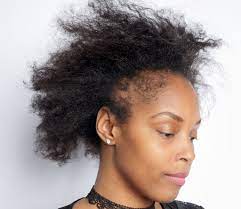If you have been in the natural hair community for even the shortest period, you must have heard the word Alopecia going around. Just to clear the air, and answer the big question before we proceed, Alopecia is not contagious, and neither is all forms of Alopecia a medical condition. Alopecia is basically the general term for hair loss and we would shed light on how to restore your hair from Alopecia.
Types of Alopecia
- Alopecia Areata
- Alopecia Totalis
- Alopecia Universalis.
- Traction Alopecia
- Androgenic alopecia
NB: It is normal and part of the body's natural process to shed hair from time to time depending on the stage it is. There should only be a concern when there is excessive shedding or breakage is identified. Every woman suffers from one form of hair loss or the other at least once in her lifetime.
How Does a Person Get Alopecia?
Just as there are different types of hair loss, they can all be gotten through different means. Some hair loss can also be hormonal for example, some women experience hair loss during pregnancy. Androgenic Alopecia is genetically acquired while traction alopecia is what I would call "self-inflicted" hair loss due to tension on the scalp from tight hairstyles/hair tools over a long period of time.
Alopecia Areata itself is caused by an autoimmune disease while Totalis and Universalis have more to do with the area of hair loss, that is localized or all around the scalp.
Is Alopecia Treatable?
Some types of Alopecia are treatable and your hair can be restored. Depending on the particular form, that would determine the treatment approach. However, some forms of Alopecia can only be slowed down by the use of prescribed hormonal supplements, topical treatments, or a hair transplant.
How Can You Prevent Alopecia?
As mentioned earlier, depending on the form of Alopecia if it is preventable or just possible to slow down the hair loss process. The hair loss some women undergo during pregnancy can only be helped through a good diet, and supplements, however, if this is your case, you can simply wait it out and natural causes would take place and your hair would grow back after you put it to bed.
For Traction Alopecia, it goes without saying;
- Avoid hairstyles that put tension on the strands and scalp
- Opt for protective hairstyles instead
- Sleep with a silk or satin bonnet
- Keep your hands out of your hair
- Reduce frequent manipulation and changing of hairstyles
- Avoid sleeping with hair tools like Flexi rods in your hair
How to Restore Your Hair From Alopecia
Honestly, forget about tackling hair loss issues on your own, this is because it can actually get frustrating for a lot of naturalistas especially when the results are not forthcoming. A certified Trichologist would need to access your hair and scalp to determine the specific type of hair loss and propose a proper treatment.
If you discover hair loss after a tight hairstyle, then we advise you follow the steps above.
For genetic and other forms of hair loss, you can undergo;
- Microneedling session
- High-frequency treatment
- Low-level laser therapy
- Scalp massages
- Hair transplant surgery
Are you struggling with any form of Alopecia, and you have tried several methods without results Register for AN Superstars. Once you join this program, your alopecia will not stand a chance. The results speak for themselves.












No comments
Please drop a comment, we want to learn from you.